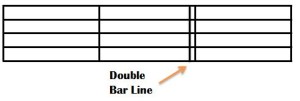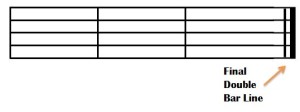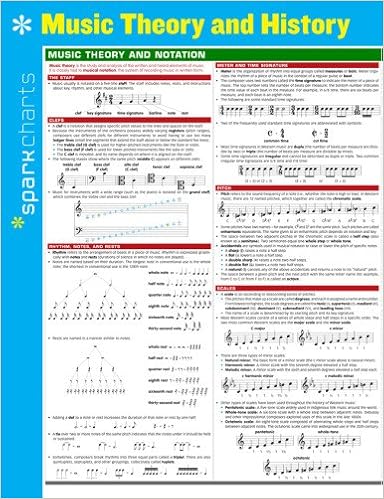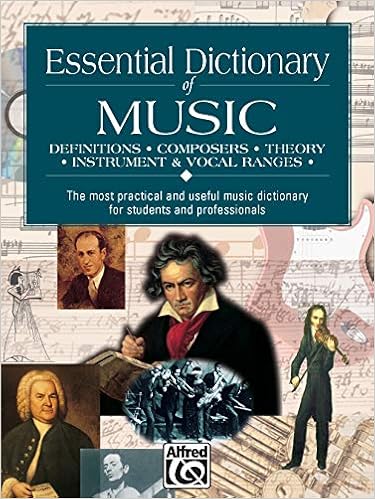| This reading music lesson is a supplement to the Alfred’s Essentials of Music Theory self-study workbook. While no book is perfect for learning how to read music, this is one of the best available. The concise explanations, brief practice exercises, ear-training CD’s, glossary of music terms, and answer key make it an excellent value. Buy this top-rated self-study course for beginners to advanced musicians and follow along with me. |
The best music theory book for self-study at home available today. Learn how to read and write music in 75 concise lessons you can complete at home. Improve your musical ear with ear-training exercises on 2 included CD's. Test yourself in a review section at the end of each unit. Check your knowledge with the answers in the back of the book.
Double bar lines are found at the end of a section of music or at the very end of a song.
Just as bar lines divide the music staff into smaller sections, double bar lines organize the music into larger sections.
NOTE: The correct terminology for this in music theory is simply “double bar.” However, the rest of the world calls them “double bar lines.”
I think this is because it more accurately describes what you are looking at making it easier to remember.
End of Section
A double bar line telling us it is the end of a section or movement will have 2 thin lines like this:

End of Song
If it is the end of the entire piece, then the second line will be a little thicker like this:

Even though both examples above are called double bar lines, they serve 2 completely different purposes.
Final Double Bar Line
In order to keep them straight, I like to call the last example a final double bar line.
Using this term for this specific type of double bar line seems a little clearer to me. It’s saying this is the true ending and the music will be brought to some kind of closure or finality.
Now that we’ve got that straightened out, it’s time to move on to the time signature.
Music Theory Quick Reference Books and Guides
This foldable 8x10 inch music theory cheat sheet is an excellent quick reference guide when you need to find the answer fast. The side 3-hole punch allows you to keep it in a 3-ring binder. It is sturdy and folds out featuring music theory and notation on the front and music history on the back.
A practical pocket-size music theory dictionary and music notation reference guide that is perfect for all musicians from beginner to professional.
A convenient music theory book that is small enough to fit in your pocket, backpack, or instrument case. A great reference guide for all musicians at any level of music study.





IJWTS wow! Why can’t I think of thnigs like that?